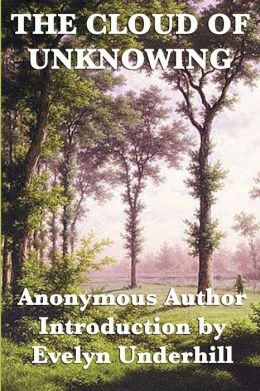
The Cloud of Unknowing (Middle English: The Cloude of Unknowyng) is an anonymous work of Christian mysticism written in Middle English in the latter half of the 14th century. The copy before me is subtitled "A Book of Contemplation the which is called the Cloud of Unknowing, in the which a soul is oned with God." Edited from the British Museum MS. Harl. 674, with an introduction by Evelyn Underhill, 4th edition. It was published in London by John M. Watkins, 1946.
The text, which birthed the idea of 'centering prayer', is a spiritual guide on contemplative prayer in the late Middle Ages. The precise identity of the treatise is unknown, although various individuals were suggested as its author over the years. The debate over who might have penned the original still occupies the academic hunger of many researchers.
The underlying message of this work proposes that the only way to truly "know" God is to abandon all preconceived notions and beliefs or “knowledge” about God. To be courageous enough to surrender your mind and ego to the realm of "unknowingness," at which point, you begin to glimpse the true nature of God.
While some dismissed the work as mere theosis (the entry into deification) or as too similar to transcendental meditation , others focused on its attempt to move the person into a deeper and closer relationship with God. A mysticism familiar in various periods of Christian history.




